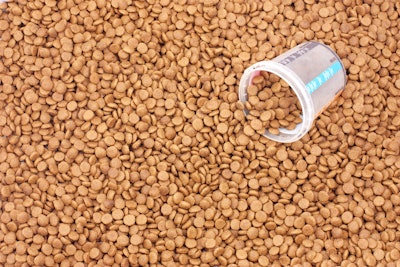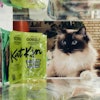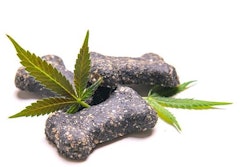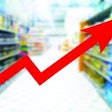
When it comes to pet food sold by volume, it’s become a familiar scenario: In developed markets, volume sales have been slow, flat or declining, offset by higher prices leading to value sales growth, with high inflation over the past few years accelerating that trend. In developing markets, pet food volume and value sales had both been growing significantly, were slowed somewhat by the pandemic and economic challenges, and now have started to rebound.
Recently released pet food volume data for 2023 confirms that dynamic is still in play, though with some nuances and disparities depending on the source. For example, a new report from CoBank, citing data gathered in collaboration with Circana, shows overall U.S. pet food volume declined in 2023 from 137 million pounds in 2022 down to 126 million (and the 2022 total was down from 146 million in 2021).
“Other” pet food (not dog or cat), experienced the largest decrease at 8.1%, the report said, though it’s a very small part of the market; the 5.2% decrease in the largest subcategory, dog food, was likely the main driver of the total decline. U.S. cat food volume was essentially flat in 2023, dropping just 0.4%.
Another new report, Alltech’s “Agri-Food Outlook 2024,” paints a rosier picture, indicating 1.31% pet food volume growth in the U.S. in 2023 and 1.21% for North America overall. (This report doesn’t break down its pet food volume data, which it measures in million metric tons, or MMT, by species.) The 1.21% increase for North America helped it surpass Europe as the largest region globally for pet food volume. In 2023, North America registered 11.34 MMT of pet food, compared to 11.20 in 2022, while Europe’s volume was 10.97 and 11.28, respectively (a decline of 2.71%).
How pet food volume is changing globally
Worldwide, pet food volume increased by 0.74% in 2023, according to the Alltech report. The only other sectors showing any growth were poultry (broilers and layers), while overall feed volume globally decreased slightly, 0.2%.
With the report covering all regions and homing in on a few countries, the difference between developed versus developing markets for pet food volume becomes evident in some cases. Besides the decrease in Europe, North America’s increase was among the smallest; conversely, pet food volume in Asia-Pacific grew 2.41%, Latin America, 3.85%, and Oceania, 7.57%. Middle East was flat and Africa grew 1.02%.
While those latter two regions’ volume defies the developing-market-growth trend, they’re such a small part of the global market; and though Oceania includes more developed markets like Australia and New Zealand, it also includes developing markets and is also a small region in terms of pet food market share.
The Alltech report delves into the three largest countries by feed volume, and that’s where the developed vs. developing market pet food differences are more stark. The U.S. is the second largest country globally for feed and experienced that 1.31% growth in pet food in 2023. It’s sandwiched between China as the #1 feed country; there, pet food volume increased 6%. The third largest country is Brazil, which registered 6.18% pet food volume growth in 2023.


















